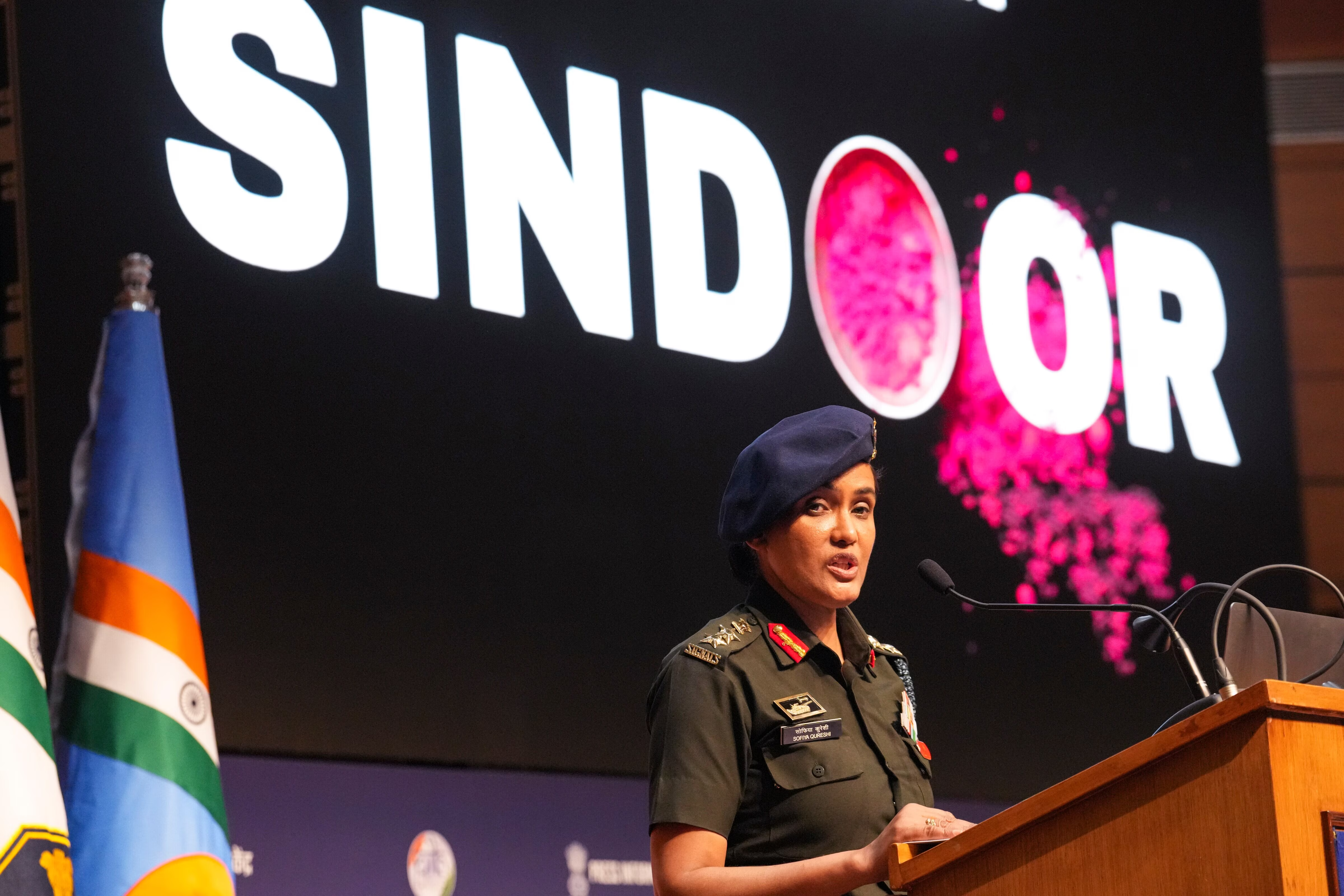- Courses
- GS Full Course 1 Year
- GS Full Course 2 Year
- GS Full Course 3 Year
- GS Full Course Till Selection
- Answer Alpha: Mains 2025 Mentorship
- MEP (Mains Enrichment Programme) Data, Facts
- Essay Target – 150+ Marks
- Online Program
- GS Recorded Course
- Polity
- Geography
- Economy
- Ancient, Medieval and Art & Culture AMAC
- Modern India, Post Independence & World History
- Environment
- Governance
- Science & Technology
- International Relations and Internal Security
- Disaster Management
- Ethics
- NCERT Current Affairs
- Indian Society and Social Issue
- NCERT- Science and Technology
- NCERT - Geography
- NCERT - Ancient History
- NCERT- World History
- NCERT Modern History
- CSAT
- 5 LAYERED ARJUNA Mentorship
- Public Administration Optional
- ABOUT US
- OUR TOPPERS
- TEST SERIES
- FREE STUDY MATERIAL
- VIDEOS
- CONTACT US
Operation Sindoor to Ceasefire: A Holistic Coverage
Operation Sindoor to Ceasefire: A Holistic Coverage

What was Operation Sindoor?
- Operation Sindoor launched on May 7th, 2025, to retaliate against the Pahalgam terrorist attack on April 22nd, 2025.
- Indian forces attacked nine terrorist bases in Pakistan and Pakistan-Occupied Kashmir (POK).
- These terrorist bases belonged to Jaish-e-Mohammed, Lashkar-e-Taiba, and Hizbul Mujahideen in Pakistan and Pok.
- This Operation was conducted by the coordinated efforts of the Army, Navy, and Air Force, conducted from Indian territory.
- India’s forces only targeted terrorist bases and never attacked civilians. However, Pakistan attacked civilian areas in India and even tried to harm temples, gurdwaras, and churches.
Arms and Ammunition Used by India: India used High-Precision Weapons in Operation Sindoor:
- SCALP Cruise Missiles:
- It is a cruise missile. It is also known as Storm Shadow.
- Cruise missiles are:
- Unmanned (no pilot inside).
- Self-propelled (they move on their own).
- Guided (directed toward a target).
- They stay in the air by using aerodynamic lift (like an airplane) for most of their flight.
- Their main job is to deliver a bomb or special payload to a target.
- It is a long-range, air-launched (aircraft-to-aircraft), stand-off attack cruise missile
- It was developed by MBDA, a multinational defence company based in Europe.
- The missile has a range of approximately 560 kilometres (around 350 miles).
- It can be launched from various aircraft platforms, including the Mirage 2000 and the Rafale.
- It consists of GPS + Inertial Navigation + TERCOM + Imaging Infrared (IIR) for terminal guidance
- Inertial navigation is a self-contained navigation system that uses accelerometers and gyroscopes to track the position and orientation of an object relative to a known starting point, orientation, and velocity.
- TERCOM, short for Terrain Contour Matching, is a navigation system primarily used in cruise missiles to enhance their accuracy and stealth capabilities.
- By comparing real-time terrain data with preloaded maps, TERCOM enables missiles to fly at low altitudes, closely following the Earth's contours, which makes them harder to detect by enemy radar systems.
- Stealth capabilities refer to the ability of a military platform (like an aircraft, missile, ship, or drone) to avoid detection by enemy sensors, especially radar, infrared, sonar, or visual systems.
- A gyroscope is a device that helps to measure or maintain orientation and angular velocity. It works based on the principles of angular momentum.
- Examples of India’s Cruise Missile: BrahMos, Nirbhay
- HAMMER Precision-Guided Missile:
- HAMMER (Highly Agile Modular Munition Extended Range), is an all-weather precision air-to-ground munition
- Its range is about 70 km, which is also known as a glide bomb.
- Manufactured by a French company called SAFRAN.
- It cannot be jammed by enemy jamming systems, jammers are not effective against it.
- It can be used with various standard bomb sizes, including 125 kg, 250 kg, 500 kg, and 1000 kg.
- It is equipped with a wide range of guidance systems, including INS/GPS, laser, and infrared imaging.
- It can be launched from low altitude and it is difficult to intercept it.
- Loitering Munitions:
- Loitering munitions are a special type of weapon that combine features of drones and missiles.
- It is a new type of unmanned aerial vehicle (UAV) used in modern warfare.
- Unlike regular drones, which are usually used for watching or spying, loitering munitions are made to attack targets directly.
- Loitering munitions are also called kamikaze drones or suicide drones.
- They carry advanced sensors, guidance systems, and explosive warheads.
- It can provide real-time information about the battlefield.
- They can stay in the air for a long time during missions.
- They are able to make their own decisions about when to attack a target.
- S-400 Air Defence System:
- The S-400 is a powerful long-range air defense missile system. It is a surface to air defense missile.
- It is also known as the “Sudarshana Chakra”.
- India bought it from Russia in 2018 to protect its skies from enemy aircraft, missiles, and drones.
- It has a range of 400 Kms.
- Its missiles are very fast and can travel up to 17,000 kilometers per hour, which is about 14 times faster than the speed of sound.
Past Attacks on India and India’s Responses Against Pakistan:
|
Year |
Operation / War |
Trigger Event |
Indian Response |
Outcome |
|
1947 |
First Indo-Pak War |
Tribal invasion in Kashmir |
Military defense |
Ceasefire; PoK Created |
|
1965 |
Second Indo-Pak War |
Pakistan infiltration in J&K |
Army counterattack |
Tashkent Agreement (1966) |
|
1971 |
Bangladesh Liberation War |
Crisis in East Pakistan |
Full-scale war, naval strikes |
Creation of Bangladesh |
|
1999 |
Kargil War |
Pakistani intrusion in Kargil |
Operation Vijay & Safed Sagar |
India Regained Territory |
|
2016 |
Surgical Strikes |
Uri terror attack |
Special Forces cross-LoC attack |
Terrorist Bases Targeted |
|
2019 |
Balakot Air Strike |
Pulwama suicide bombing |
Air strikes on terror camp |
Escalation, Strong Political Signal |
Ceasefire Agreement:
- On May 10th, 2025, India and Pakistan agreed to a ceasefire.
- The agreement came after talks between the military heads ( DGMOs) of both countries.
- Soon after the agreement, both India and Pakistan blamed each other for breaking the ceasefire.
- Explosions happened in Indian-administered Kashmir. India said Pakistan had broken the truce.
- After some early fighting, the situation became calm by May 13, 2025.
- Both armies stayed alert, and India’s military was on high alert.
Punitive Actions that will Remain in Effect Even after the Ceasefire:
- Suspension of the Indus Waters Treaty by India:
- India has not reversed its decision to suspend the Indus Waters Treaty.
- This treaty controls the sharing of river waters between the two countries.
- Pakistan considers this move a serious threat to its water security.
- Continued High Alert by Indian Forces:
- The Indian military remains on high alert despite the ceasefire.
- Vigilance and readiness to respond to any provocation will continue.
- No Resumption of Diplomatic Talks Yet:
- There has been no announcement about resuming broader diplomatic or trade talks.
- Communication remains limited to military channels (like the DGMOs).
- Cross-Border Monitoring and Intelligence Operations
- India is likely to continue strict monitoring of cross-border movements.
- Surveillance and intelligence operations along the Line of Control (LoC) will stay active.
Conclusion:
Operation Sindoor showed that India can strongly fight back against terrorism using modern weapons and teamwork. The ceasefire on May 10th, 2025, brought some peace, but tensions still remain. India is staying alert and taking strict steps for its safety. For real peace, both countries need to take honest steps, not just sign agreements.



